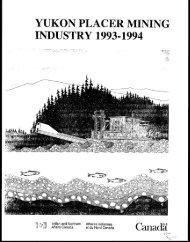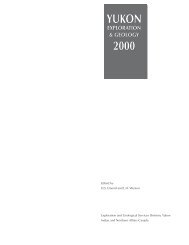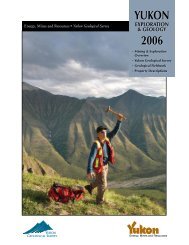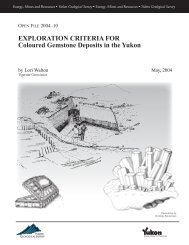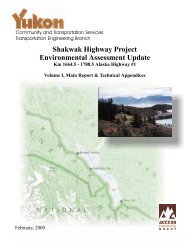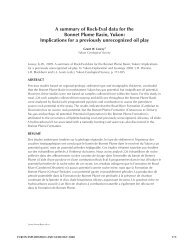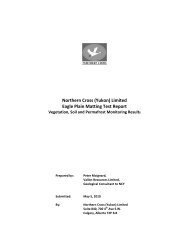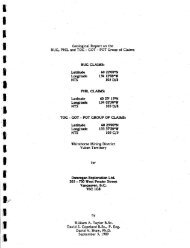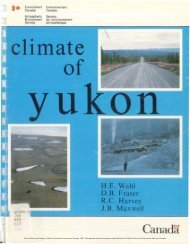WhiteCAP_Plan_01SEPT..
WhiteCAP_Plan_01SEPT..
WhiteCAP_Plan_01SEPT..
Create successful ePaper yourself
Turn your PDF publications into a flip-book with our unique Google optimized e-Paper software.
Northern Climate ExChange <strong>WhiteCAP</strong> Draft <strong>Plan</strong><br />
Executive Summary<br />
About This <strong>Plan</strong><br />
Climate has been changing in Whitehorse. It is clear from meteorological data going<br />
back to the 1940’s that temperature has been warming, especially in winters. Break up<br />
has also been arriving earlier, freeze up later and growing degree days have been<br />
increasing. The Whitehorse Community Adaptation Project, or <strong>WhiteCAP</strong>, was funded<br />
by the Northern Strategy Trust to begin the process of ensuring that Whitehorse<br />
residents are prepared for climate change. <strong>WhiteCAP</strong> consists of two distinct phases:<br />
planning and implementation.<br />
The <strong>WhiteCAP</strong> plan is intended to assess how climate change may positively or<br />
negatively affect the community over the next forty years, to 2050. The plan uses a<br />
modified form of scenario planning and risk assessment. The first half of the planning<br />
process, which focused on exploring multiple scenarios of how the community may<br />
change by 2050, is presented in the companion document for this plan: Future Histories<br />
of Whitehorse: Scenarios of Change. The <strong>WhiteCAP</strong> plan reports on the risk<br />
assessment portion of the Whitehorse adaptation planning process. Portions of the plan<br />
will be implemented in the second year of the project.<br />
The scenario planning portion of the<br />
WhtieCAP process is based on an<br />
evaluation of community vulnerability.<br />
To assess vulnerability we developed<br />
four scenarios describing how climate<br />
change may affect the community of<br />
Whitehorse based on an increase in<br />
regional mean annual temperature of<br />
2°C to 4°C and a population growth of<br />
12,000 to 24,000 people by 2050.<br />
Based on these scenarios the<br />
community identified 237 impacts and<br />
proposed 245 adaptations to address<br />
climate change.<br />
Figure 1: Risk Assessment Process<br />
Two levels of risk assessment were<br />
conducted to establish where<br />
community vulnerability was greatest<br />
(Figure 1). The first level of risk<br />
assessment, or tier one, examined the<br />
nine sectors identified in discussions of<br />
vulnerability with the community. Risk<br />
was determined based on the severity of anticipated impacts, the likelihood of the impact<br />
occurring, and the adaptive capacity of the community to respond to that impact. Five<br />
priority sectors were determined to be of risk to the community: natural hazards,<br />
infrastructure, environment, food security, and energy security. The second level of risk<br />
assessment identified high risk consequences of climate change for the community in<br />
each of these sectors. For those impacts that are considered opportunities the<br />
assessment process was the same, however we considered the strength of the<br />
opportunity rather than the severity of the risk.<br />
i



